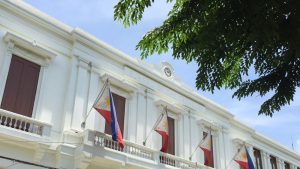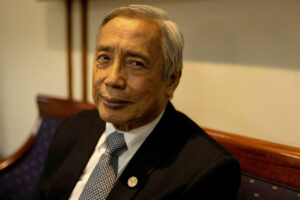BoP deficit narrows in Sept.

THE PHILIPPINES’ overall balance of payments (BoP) position narrowed significantly to $414 million in September from the $2.34-billion gap in the same month a year ago, the central bank said.
Data released by the Bangko Sentral ng Pilipinas (BSP) on Thursday showed the country’s BoP position remained in deficit for a sixth straight month in September. It was also the widest deficit since the $606-billion gap in June.
Month on month, the BoP deficit widened from the $57-million deficit in August.
“The BoP deficit in September 2023 reflected net outflows arising mainly from the National Government’s (NG) payments of its foreign currency debt obligations,” the central bank said in a statement.
The BoP measures the country’s transactions with the rest of the world at a given time. A deficit means more funds fled the economy than what went in, while a surplus shows that more money entered the Philippines.
For the nine-month period, the Philippines’ BoP position swung to a surplus of $1.74 billion from the $7.83-billion deficit in the same period in 2022.
“This development reflected mainly the improvement in the balance of trade and the higher net inflows from personal remittances, trade in services, and foreign borrowings by the NG,” the BSP said.
Latest data from the local statistics agency showed the country’s trade deficit stood at $4.13 billion in August, narrower than the $4.2-billion gap a month prior and the $6.03-billion deficit a year earlier.
Year to date, the trade deficit shrank to $36.31 billion from the $41.86-billion gap during the same period in 2022.
“Given that the current account is likely in deficit due to the sizable trade deficit, financial account inflows, most likely tied to government issuances of bonds, likely pushed the BoP into a surplus (in the January-to-September period),” ING Bank N.V. Manila Senior Economist Nicholas Antonio T. Mapa said in an e-mail.
The government raised $1.26 billion from the retail dollar bond offering in late September.
“The retail dollar bond issuance during the month helped bring the deficit to $414 million, offsetting the trade deficit,” Mr. Mapa added.
At its end-September position, the BoP reflected a final gross international reserve level of $98.1 billion, 1.5% lower than $99.6 billion as of end-August.
The dollar reserves were enough to cover 5.7 times the country’s short-term external debt based on original maturity and 3.6 times based on residual maturity.
It is also equivalent to 7.3 months’ worth of imports of goods and payments of services and primary income.
An ample level of foreign exchange buffers safeguards an economy from market volatility and is an assurance of the country’s capability to pay debts in the event of an economic downturn.
“The BoP may remain in deficit for the rest of the year given our expectation for the current account to stay in the red,” Mr. Mapa said.
In the second quarter, the current account deficit reached $3.6 billion, or equivalent to -3.4% of gross domestic product (GDP), which was lower than the $8-billion shortfall a year ago.
This brought the current account deficit in the first semester to $8.2 billion (-4% of GDP), a 32.2% reduction from the $12.1-billion deficit (-6.1% of GDP) recorded in the same period last year.
“There is a planned Sukuk issuance but we’ve yet to hear more details on the timing,” Mr. Mapa said.
The government is planning to launch Sukuk bonds by end-November. It is targeting to raise around $1 billion from the Islamic bonds, which will have a minimum denomination of at least $200,000.
The BSP expects the country’s BoP position to end the year at a $127-million deficit (0% of GDP). — Keisha B. Ta-asan




